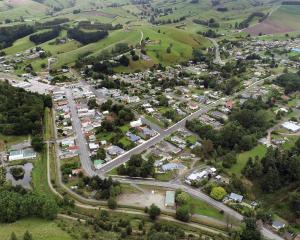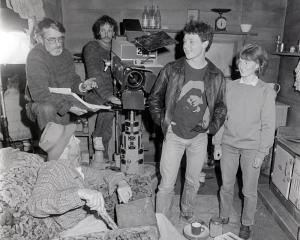Graeme Furness presents a vision of a different transport future. Bring back a modern-day equivalent of the bridleway, he proposes.
The dictionary's definition of a road is ''a way made for travelling''.
The first distinction of what you might be riding on, or in, on the said travel way, was the 1835 Highway Act in Britain. This separated the ''footpath'' from the ''bridleway'', along which you could ride your horse and drive a herd of animals, and the ''carriageway'', over which you could use any mode of transport available to you, and take the risks thereof. Except for abandoning the bridleway, nothing has changed much in the definition except a lot more rules governing the use. The 1835 Act called the carriageway a highway and deemed it be maintained by a highway authority. Footpaths were left to be maintained by ''the inhabitants at large in the parish'', so it became the job of the local councils, and that is more or less how it remains today. The ''carriageways'' of today are multiple-laned raceways and no place for the faint-hearted. Cocooned car occupants whizz along in comfort and perceived safety with triple air bags and crash ratings, but exposed walkers and cyclists negotiate at their own large risk. Trucks are of the size and weight that they cannot even notice that they have hit something should they do so.
Today, we are still thinking that the road is a freeway for all, a sort of complex puzzle or game that is alive with buzzing modes of transportation, from legs to road trains and everything in between. Included in this is the already started but soon to be proliferation of small vehicles that have arisen as the result of battery technology. There are bicycles with electric motors that will run for 40km and do 30kmh an hour easily and mobility scooters that aren't just for nipping around to the dairy. You can go across town on them, and at good speeds. These need the footpath to gain access to shops for their riders but need safer travelways when motoring to their destination. Also in this family of vehicles are Segways and Yike trikes, to name only a few.
Not yet common, but watch this space.
In China, it is estimated there are twice as many electric bikes as there are cars, about 130 million of them. Perhaps we need to bring back the ''bridleway'' that was abandoned in 1835.
Horses could use it, but it would more widely be the domain of pedestrians, cyclists, power-assisted cycles and the increasing variety of vehicles in the mobility scooter family. If a separate licence fee were created somehow for cycles and scooters (shoes?), it would finance the very best available ''travel way'' that suited its users. I would happily pay $100 a year for a safe and attractive cycle and walkway around the place, particularly when I consider what it costs for a car and the road. I know I would use a bike/electric bike a huge amount more if there were not the fear of using the road, as there is at present.
That fear is justified when you look at where cyclists have to navigate on Dunedin's one-way system, or pretty much any major road.
We could call our roads ''high-speed roads'' and ''low-speed roads''.
High-speed roads would be the ones cars and trucks use. Low-speed roads would be a completely separate roading system that has arterial routes and smaller roads.
It would have nothing to do with cars and trucks (except to get access to a driveway at low speeds).
There would be parks and cafes and stops where you would charge your batteries while parked or having a coffee.
Low-speed roads would have their own rules and laws, such as mandatory bells on bikes so you do not scare the stuffing out of pedestrians when approaching them from behind. There would be lanes and signage just like on high-speed roads, and incidents and accidents and danger from boy-racer electric-scooter drivers. However, if I am a pedestrian, I would much rather get hit by a Segway than a truck. Obviously, putting in such a road system is easier when a suburb or city area is being planned, but installing such roads in existing areas would not be impossible. Some roads that go through a suburb could become low-speed roads to create a network. Such changes should not mean a drastic change for residents, and properties on the network may even become desirable. I believe city areas would grow new business opportunities on these roads aimed at this new ''traffic''.
High-speed roads could concentrate on moving cars and trucks efficiently. Low-speed roads would create a safe and legal place for all these ''hard to categorise'' incoming small modes of transport such as the Segways, and a good roading system would see the numbers in use soar.
• Graeme Furness lives at Macandrew Bay.











